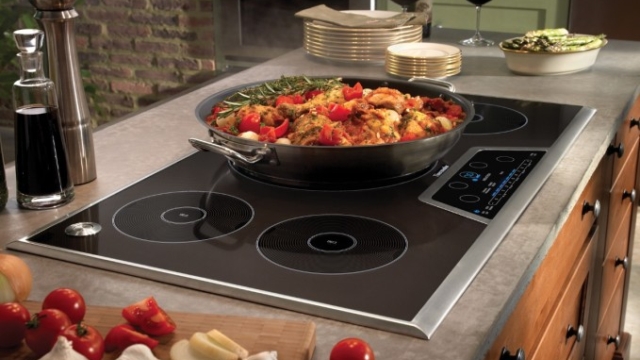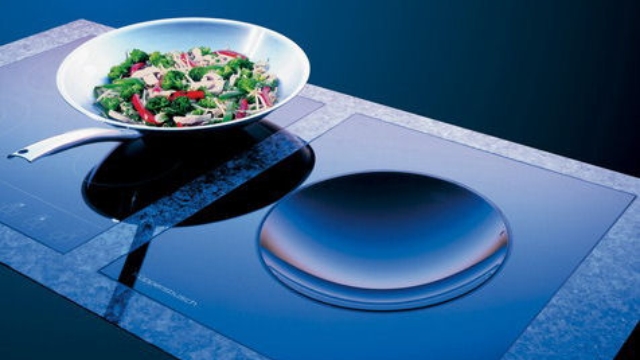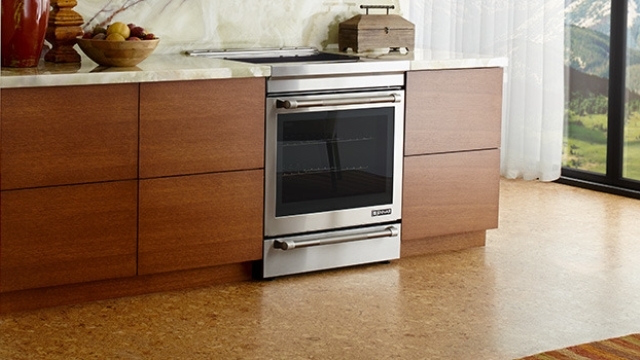The Induction Site
Search this site, or just roll your cursor over the colored boxes below the pictures.Advertisement:
Advertisement:
Advertisement:
Advertisement:




"It is time to choose."
—Wallace Stevens
(If you are already well familiar with how the listings work, you can "cut the cackle and get to the hosses".)
Quick page jumps:

Only a few years ago, the availability of induction-cooking equipment in the United States was extremely limited (though worldwide it was expansive). Today, the choices in the U.S. are become many, and even so are growing almost weekly as more and more makers jump into this expanding market. We used to have a single page listing all available units, but we had to leave off a lot of data to make the unit entries all fit in a reasonable space. We have now elected to separate out the listings by approximate unit width; that seems reasonable, as most people looking for a unit know how much countertop space they have available, so it is easier to just look at units of that width (and you can certainly look at every listing page if you're not sure yet what size you need). A little farther down this page will be a set of links allowing you to see all extant build-in induction units segregated into "domino" 12" to 15" units, 24-inch-wide units, 30-inch-wide units, 36-inch-wide units, and induction-topped ranges.
Those pages present information only on so-called "residential" units, which are called that to distinguish them from "commercial" units—which latter are made for use in restaurants, catering, and suchlike high-stress environments. While residential equipment is an impossible choice for a commercial environment, the reverse is not necessarily true: indeed, the only barrier to commercial induction equipment in the home kitchen is price, and the differential is often not so large as you might think. (Gas commercial equipment is usually almost impossible in a home kitchen, owing to the tremendous amounts of waste heat given off, plus the grotesque weight of such commercial units; but this is induction—we're out of the stone age now.) If you like, you can also review our listings of commercial equipment (you might want to look at—for one example—the Cooktek line).
Note also that the tabulations on those pages are further limited to build-in units—that is, those set into a cutout in a countertop as permanent installations. There are, of course, also numerous freestanding countertop-type units, and we have a separate page tabulating all those freestanding countertop induction units—again, limited to those for residential use, with the same hint that you might also look at corresponding commercial equipment.
|
The listing pages present only some basic data on each unit—they are summaries, not
full presentations. For the full data on a given unit, click on its model
number. To help you make sense of the many listings on each page, we strenuously recommend that you review our page here on the principles of selecting a unit. |
All data presented (except cost-related ones) are taken from either the maker's web site or, if we have it, the maker's manual for the item. Regrettably, that is no guarantee of accuracy, because many makers publish incomplete or, worse, incorrect data on their web sites (and often even in their manuals); we just do the best we can. From this page, clicking on any particular model number listed here will cause a full data page for that unit to open in a new browser window. That page will have a colored box (the colors, incidentally, both for those boxes and for the background of the table here, are keyed to the countertop width of the units) giving a full, standard set of data for the unit, plus a large image or two of it. On the same page will be buying information—usually from several competing sellers—for that unit, meaning its price and shipping costs (if any—many of the units we sell ship free). If you want the unit, you can click on one or another of the sellers' listings and be taken to that seller's page for the unit where, if you then so choose, you can actually buy the unit.
We try to list for sale every unit available in the U.S. But we will not and do not list
any unit for sale unless we believe the sellers' offers include either the very lowest price
around, or are at worst very closely competitive. There are a lot of sellers out there, but
we have put time and effort into assuring that the ones whose listings we display
are—by consumer feedback—highly reputable and respected; in that connection, it
is probably apt to recall John Ruskin's famous remark on prices:
There is absolutely nothing in the world that some man cannot make a little worse and sell a little cheaper; and the people who consider price only are this man's lawful prey.If you find this web site useful and helpful, please support it when it buying time comes by buying your unit through us. For more on why, and how it works, please read our page entitled Why Buy Here? Thank you. |
The actual cost and the derived dollars-per-kilowatt figures in the various tables are, in most cases, live, real-time data (that is, never more than 24 hours old) from the retailers we work with; in a few cases, though—those we do not list for sale here for which real-time price data are thus not readily available to us—we use static data hand-entered periodically. Those few cases are all clearly marked out in the table with an asterisk * after the dollars-per-kilowatt figure. Generally, the dollars in the $/kW figure are lowest base prices (that is, shipping, if any, is not reckoned); that's not critical, as it is only when the figures are very different that it matters—small differences from model to model are not that important (and in fact they are each rounded off to the nearest $5).
We go to some lengths to try to assure that the data we present are accurate and complete, but—as common sense should suggest—we cannot warrant these data, which are presented for solely your convenience and guidance; the makers of the subject equipment are the sole and final source of definite data, and the selected vendors of actual prices. So nyah, nyah, all you lawyers.
Finally, remember that we continue to develop all our pages. We're always triple-checking things like dimensions and available on-line documents, and looking for new units (or any obscure ones we might have overlooked), so do check back in periodically.
Nowadays, more and more appliance makers are trying to limit your opportunities to buy their products over the internet; that, presumably, is to protect their networks of regional retail stores, so that to buy such a brand, you have to go into a local store, ask the price, and let the sales staff try to close the deal. Right now, the makers who will not let an online store deliver their products to customers more than a hundred or so miles away (it varies with maker) include: GE's "Monogram" line (but not their "Profile" line); Kitchenaid; Thermador; Viking; and Wolf. Gaggenau claims to forbid internet sales, period; Wolf, while not actually forbidding it, campaigns heavily against it. (Note that Gaggenau and Thermador are both part of the BSH conglomerate.) Other makers, such as Jenn-Air—besidesthe ones already mentioned concerning territoriality—dislike or forbid the publication (online or off) of prices (sellers can display the notorious "MSRP"—Manufacturer's Suggested Retail Price—a phony "stickerprice" like that on new cars), but not the actual street price they're willing to sell at. We think that is a ghastly, and, to be frank, vile way to do business. It artificially shelters a few dealers at the expense of, yes, you ("Ask not for whom the cash register tolls."). But it's the way the industry works right now, and we have accomodated to it as best we can.
Advertisement:
Advertisement:
All content copyright © 2002 - 2025 by The Owlcroft Company.
This web page is strictly compliant with the W3C (World Wide Web Consortium) Extensible HyperText Markup Language (XHTML) Protocol v1.0 (Transitional) and the W3C Cascading Style Sheets (CSS) Protocol v3 — because we care about interoperability. Click on the logos below to test us!
This page was last modified on Monday, 22 January 2024, at 12:46 am Pacific Time.